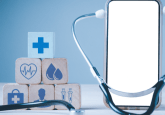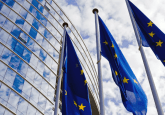CIOMS publishes report on real-world evidence in regulatory decision-making

The Council for International Organizations of Medical Sciences (CIOMS) has released a comprehensive report, detailing the use of real-world data (RWD) and real-world evidence (RWE) in regulatory decision-making.
This consensus report, developed by the CIOMS Working Group XIII and finalized following public consultation, comes at a time when many medicines regulatory agencies are increasingly considering RWE to support claims of efficacy, effectiveness, and safety of medical products. The report targets a wide audience, including medicinal product regulators, healthcare payers, the healthcare and medicinal products industries, researchers, bioethicists, patients, and healthcare professionals. Its purpose is to inform discussions about the application of RWD and RWE in various decision-making contexts, such as product authorization, reimbursement, and clinical use.
Executive summary
The report begins by defining RWD as data derived from sources other than traditional randomized controlled trials (RCTs), and RWE as the evidence obtained from reviewing and analyzing RWD. RWD and RWE are increasingly utilized throughout the lifecycle of medicinal products to demonstrate their effectiveness and safety. The urgency to develop accepted processes that promote trust in RWE generation has grown due to recent regulatory guidance and approvals based on RWE. This report outlines the use of RWE in decision-making, the sources of RWD, key scientific considerations, and ethical and governance issues.
Chapter 1: RWE for decision-making during the product lifecycle
The report highlights the diverse stakeholders who use RWE, including regulators, health technology assessment (HTA) organizations, healthcare payers, patients, healthcare professionals, and pharmaceutical companies. It notes that regulatory agencies have issued guidance on using RWE to inform various stages of a medical product’s lifecycle. The report stresses the importance of transparent planning, reporting, and evaluation processes for RWE.
Chapter 2: Sources of RWD
RWD encompasses a broad range of sources, including healthcare data, spontaneous adverse event reporting systems, ad-hoc data collections, and emerging technologies like mobile devices and biosensors. The report acknowledges the challenge of ensuring data validity from novel devices.
Chapter 3: RWE for regulatory use: key considerations
Since RWD is often collected for purposes other than research, their suitability for specific research purposes must be assessed. The report outlines commonly used epidemiologic research designs, considerations for statistical analysis, best practices for study registration, transparent reporting, documentation, and responsible communication. It stresses the importance of reproducibility in studies using RWD.
Chapter 4: Ethics and governance
Ethical and governance issues, such as privacy, data protection, and informed consent, are crucial when using RWD to generate RWE. The report discusses the efficacy-effectiveness gap observed between RCT outcomes and real-world circumstances. It highlights the challenge of balancing data protection laws with the need to evaluate medicinal products’ effectiveness. The report also delves into ethical considerations around increasing RWE use, including respecting patient autonomy, data protection, the need for informed consent for data re-use, and building public trust. Harmonizing practices and guidance globally is identified as a future need to maximize public health benefits from RWD/RWE.
Chapter 5: Conclusions and future directions
The report underscores the role of RWD and RWE in health-related regulatory decision-making across a medicinal product’s lifecycle. It addresses the needs of various stakeholders, available data sources, key scientific considerations, and ethical and legal perspectives. The report calls for global harmonization of practices and guidance for using RWD and RWE to maximize public health benefits. It highlights frameworks for RWE acceptance by stakeholders, including country-specific examples, and how they can adapt to evolving population health needs. The planning for global RWE generation across the product lifecycle is emphasized, discussing traditional and emerging data sources, and clarifying the use of RWD in both observational studies and controlled trials like pragmatic trials.
Industry feedback
Enrica Alteri expressed optimism about the report’s impact, stating that, “we hope this report furthers discussions and contributes to the future development of RWD/RWE in regulatory decision-making, thereby helping to maximize the benefits they can bring to public health.”
Juhaeri Juhaeri echoed this sentiment, highlighting the collaborative effort involved, “the report received a huge amount of comments during the public consultation, a testimony of the interest raised.”
Want regular updates on the latest real-world evidence news straight to your inbox? Become a member on The Evidence Base® today>>>






